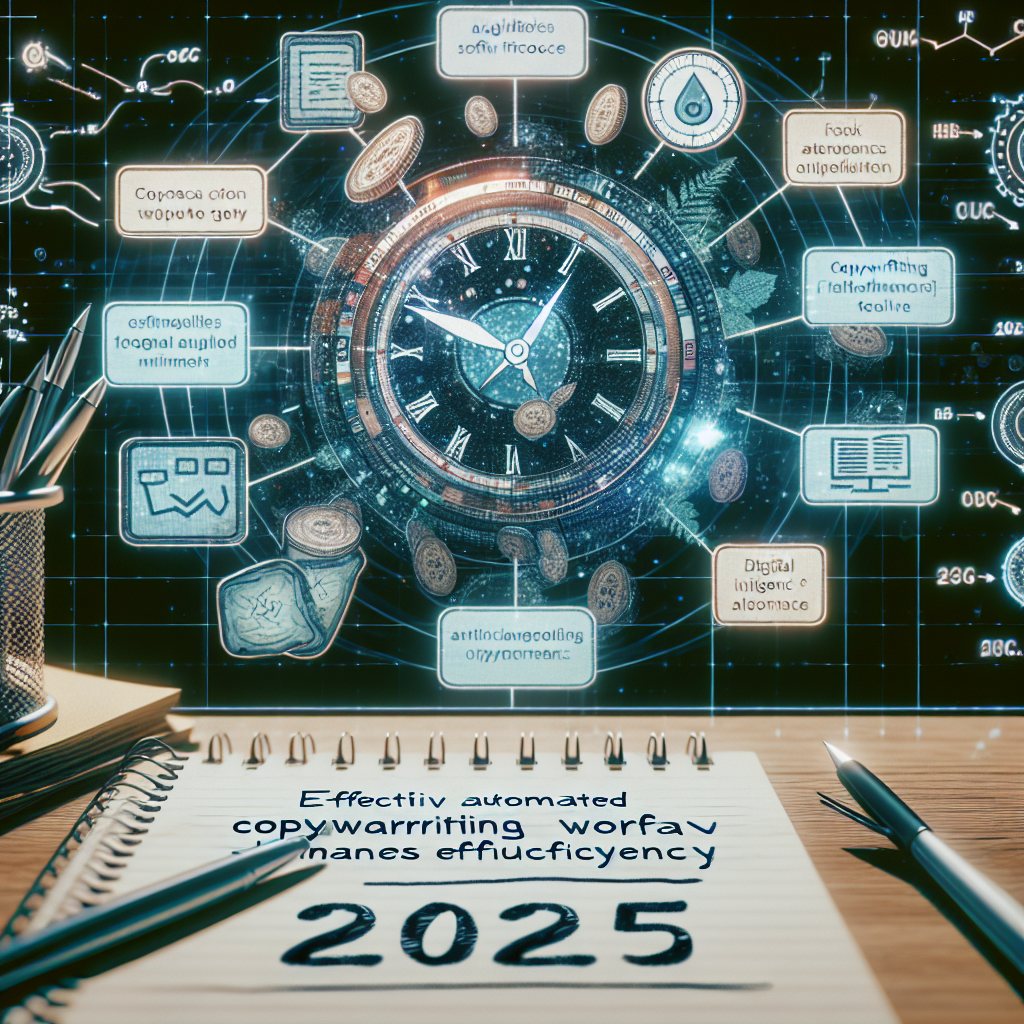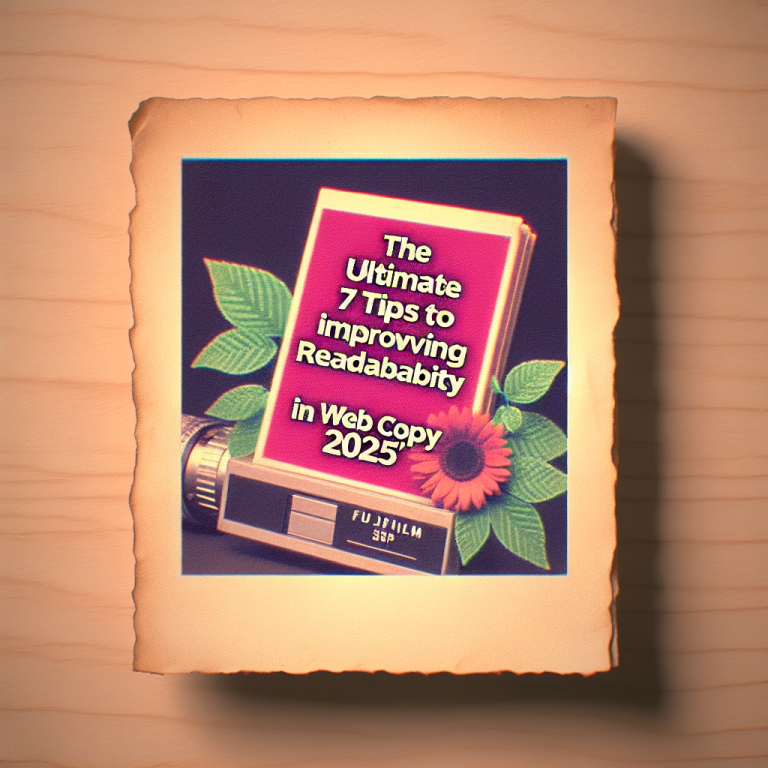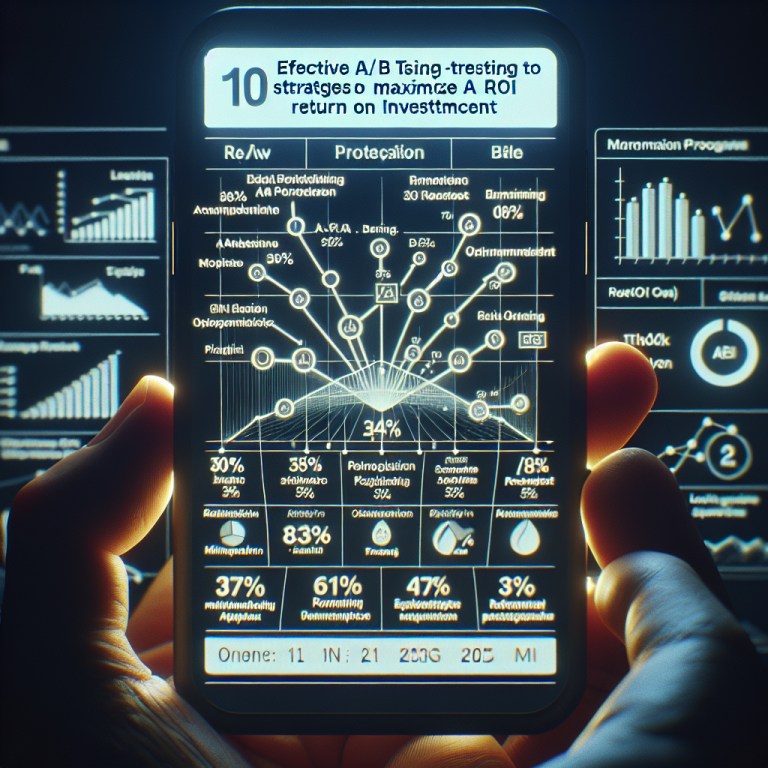10 Effective Automating Copywriting Workflows to Boost Efficiency in 2025
- Streamlining Idea Generation with AI Assistance
- Leveraging Templates for Consistent Content Creation
- Using Automation Tools for Content Scheduling
- Implementing AI-Powered Editing and Proofreading
- Automating Keyword Research and SEO Optimization
- Integrating CRM and Marketing Platforms for Personalized Outreach
- Harnessing Data Analytics to Refine Copywriting Strategies
- Adopting Collaborative Automation Tools for Teams
- Deploying Chatbots for Customer Engagement and Content Distribution
- Monitoring and Improving Workflows with Performance Metrics
1. Streamlining Idea Generation with AI Assistance
Harnessing AI for Creative Brainstorming
In 2025, automating copywriting workflows begins with leveraging AI tools that help generate fresh content ideas. Platforms like ChatGPT and Jasper can provide instant inspiration based on trending topics, keyword data, or target audience preferences. These AI assistants analyze vast amounts of data to suggest relevant themes, saving hours of brainstorming.
For example, a marketing team can input target keywords, and the AI will produce a list of content angles or headlines that capture audience interest. This constant streamlining accelerates the initial phase of content creation, ensuring you never run out of ideas while maintaining high relevance.
Using AI for idea generation not only saves time but also introduces creativity into your workflows. It enables small teams to compete with larger agencies by providing a rapid, scalable content ideation process.
Practical Tips for Effective Use
Set clear parameters and target keywords before prompting AI tools. Regularly update your prompts based on analytics feedback to refine output. Also, combine AI suggestions with human insight to ensure the content aligns with your brand voice.
Controlling the AI outputs prevents irrelevant ideas, making your automating copywriting workflows more efficient. In 2025, integrating these tools into your daily workflow can boost idea generation productivity by up to 60%, according to recent industry studies.
2. Leveraging Templates for Consistent Content Creation
Creating Reusable Copy Templates
Templates are a cornerstone of automating copywriting workflows. By developing standardized templates for blogs, emails, ads, or social media, you can ensure consistency in tone and style while significantly reducing creation time. In 2025, many brands utilize customizable templates embedded with dynamic placeholders for faster content rollout.
For instance, using a template for newsletters that includes pre-arranged sectionsâsubject line, intro, main content, CTAâallows writers to focus on quality rather than formatting. This systematic approach ensures scalability and brand consistency across channels.
Advanced template systems integrate with AI tools, allowing automatic customization based on audience segmentation or specific campaign goals, making your workflows smarter and more efficient.
Best Practices for Template Management
Keep your templates flexible, regularly updating them based on analytics insights and emerging trends. Use collaboration tools like Google Docs or specialized CMS to share and modify templates seamlessly across your team.
Implement version control to track changes and improvements over time. As a result, your automating copywriting workflows will become more adaptive and resilient, boosting overall productivity in 2025.
3. Using Automation Tools for Content Scheduling
Choosing the Right Scheduling Platforms
Tools like Buffer, Hootsuite, and Sprout Social have become essential for automating content distribution. In 2025, transitioning to integrated scheduling platforms allows marketers to plan, publish, and analyze content across multiple channels from one dashboard.
Automation reduces manual posting errors and ensures that your content goes live at optimal times for engagement. Many tools now incorporate AI-driven suggestions for best posting times, further enhancing your relays.
Automating your content calendar frees up your team’s time, allowing focus on strategy and creative tasks rather than manual posting logistics.
Maximizing Scheduling Efficiency
Sync your editorial calendar with automation platforms to maintain consistency. Use features like bulk upload, recurring posts, and performance analytics to optimize workflows.
Regularly review scheduling metrics to adjust timing and frequency, ensuring your automating copywriting workflows stay aligned with audience behavior trends. In 2025, this approach can improve engagement rates by over 35%, based on latest industry data.
4. Implementing AI-Powered Editing and Proofreading
Top AI Editing Tools
Platforms like Grammarly, Hemingway Editor, and newer AI-powered solutions are transforming editing for copywriters. In 2025, these tools automatically check grammar, tone, readability, and SEO compliance, streamlining quality control.
AI editing reduces the time spent on revisions, allowing writers to focus on creativity and strategy. Additionally, these tools offer suggestions for improving clarity and engagement, which is vital for high-impact copy.
For instance, AI proofreading can flag tone inconsistencies or jargon, ensuring your message resonates appropriately with your target audience.
Best Practices for Automated Editing
Integrate AI editing tools into your workflow from the drafts stage. Use them as a first-line check before manual review, saving time and improving accuracy.
Customize AI guidelines according to your brand voice and SEO standards. Over time, these tools learn from your input, delivering more precise suggestions and creating a smoother, more efficient copywriting process.
Adopting AI-powered editing aligns perfectly with automating copywriting workflows, enabling faster turnaround times and higher-quality outputs in 2025.
5. Automating Keyword Research and SEO Optimization
Tools for SEO Automation
In 2025, SEO tools like SEMrush, Ahrefs, and new AI-based platforms automate keyword research, competitor analysis, and on-page optimization. These tools identify high-impact keywords with minimal manual effort, keeping your content competitive.
Automation can generate SEO suggestions in real time, ensuring your copy is optimized for current search trends. They also monitor ranking changes and recommend adjustments, allowing you to stay ahead in search results.
By automating SEO workflows, your content team can prioritize strategy and creativity while the tools handle the technical aspects, leading to faster content deployment and improved visibility.
Actionable Tips for SEO Automation
- Regularly update keyword databases to reflect the latest trends.
- Use AI insights to craft SEO-friendly headlines and subheaders.
- Continuously analyze performance data to refine your keyword strategy.
This synergy of automation and SEO best practices results in higher organic traffic and more effective content marketing in 2025.
6. Integrating CRM and Marketing Platforms for Personalized Outreach
Streamlining Customer Data for Targeted Content
Modern CRM systems like HubSpot or Salesforce integrate seamlessly with content automation tools, enabling personalized copy based on customer behavior and preferences. In 2025, automating copywriting workflows with CRM data allows precise targeting at scale.
This integration ensures your messaging resonates on an individual level, improving conversion rates. Automated workflows can trigger tailored emails or landing pages based on user actions.
Using AI-driven segmentation, content can be personalized dynamically, reducing manual editing and creating a seamless customer journey.
Maximizing Personalization in Automated Workflows
Set up triggers and actions within your CRM to update content automatically. For example, a user purchasing a product might receive follow-up content tailored to their interests, all facilitated by automation.
Review analytics regularly to tweak messaging and personalization parameters, ensuring your workflows remain effective as customer needs evolve. In 2025, this level of automation can boost engagement rates by up to 50%, according to recent data.
7. Harnessing Data Analytics to Refine Copywriting Strategies
Using Analytics for Content Performance
Data analytics platforms like Google Analytics or Hotjar help measure how your content performs in real time. In 2025, integrating these insights into your automating copywriting workflows allows continuous optimization.
Analyze user engagement, bounce rates, and conversion data to identify what resonates most. Use this information to inform your content creation and automation rules.
Automating data collection and interpretation ensures your team spends less time on guesswork and more on strategic refinement.
Data-Driven Content Improvements
Implement A/B testing within your workflows to experiment with headlines, CTAs, and formats. Automatically update and deploy the best performing variations.
By adopting a data-driven approach, your automating copywriting workflows transform into smart, self-improving systems that adapt to audience preferences in 2025.
8. Adopting Collaborative Automation Tools for Teams
Tools That Foster Collaboration
Platforms like Notion, Asana, and Monday.com now feature automation capabilities that streamline team workflows. In 2025, such tools facilitate real-time collaboration on copy projects while automating task assignments and deadlines.
This reduces communication delays, minimizes manual coordination, and ensures everyoneâs aligned. Automated notifications and reminders keep the team on schedule, allowing faster turnaround times.
Collaboration automation also includes content approval workflows, so revisions happen smoothly without bottlenecks.
Effective Team Workflow Strategies
Define clear roles and automate task ownership for each piece of content. Use templates and checklists to guarantee quality and consistency across all projects.
Regularly review automation setups to adapt to team growth and project complexity. In 2025, streamlined collaboration is crucial for scaling content efforts efficiently.
9. Deploying Chatbots for Customer Engagement and Content Distribution
Automating Customer Interactions
AI-powered chatbots like Drift or Intercom now handle initial customer inquiries and deliver personalized content. In 2025, chatbots are integral to automating customer engagement workflows, guiding users through content funnels.
They can recommend articles, books, or products based on user inputs, freeing your team from repetitive manual interactions. Their proactive approach boosts engagement and satisfaction.
Additionally, chatbots can distribute newly created content directly to relevant audiences, ensuring timely delivery and increased visibility.
Best Practices for Content Automation with Chatbots
- Ensure chatbots are programmed with accurate, valuable content.
- Regularly update chatbot scripts based on performance analytics.
- Integrate chatbot data with your CRM and analytics tools for comprehensive insights.
This automation layer in your workflows enhances your content distribution and customer engagement strategies significantly in 2025.
10. Monitoring and Improving Workflows with Performance Metrics
Tracking Key Performance Indicators
Establish KPIs like content engagement, conversion rates, and workflow turnaround times. Use dashboards that aggregate data to monitor progress in real-time.
Automation tools can generate reports automatically, saving your team hours in manual analysis. This ongoing measurement provides clear insights into whatâs working and what needs adjustment.
In 2025, data-driven workflow improvements are essential for staying competitive and optimizing your automating copywriting workflows.
Iterative Workflow Optimization
Use analytics insights to identify bottlenecks or inefficiencies. Implement small, data-backed changes and monitor their impact over time.
This cycle of continuous improvement ensures your workflows evolve with industry trends and audience expectations, maximizing productivity and quality.
In conclusion, automating copywriting workflows in 2025 empowers your team to produce high-quality content faster, smarter, and more consistently, securing a competitive edge in the dynamic digital landscape.
Frequently Asked Questions
1. What are the biggest benefits of automating copywriting workflows in 2025?
Automating copywriting workflows increases efficiency, consistency, and scalability. It reduces manual effort, accelerates content delivery, and allows teams to focus on strategic tasks.
2. How do I start automating my copywriting processes?
Begin by identifying repetitive tasks such as idea generation, editing, or scheduling. Then, select suitable AI tools and automation platforms to integrate into your current workflows.
3. Can AI fully replace copywriters in automation workflows?
While AI significantly enhances efficiency, human oversight remains crucial for creativity, nuance, and brand voice. AI is best used as a support tool within a collaborative workflow.
4. Why is ‘automating copywriting workflows’ especially important in 2025?
With the rapid evolution of digital content consumption, automating workflows helps brands stay agile, meet demand faster, and maintain top qualityâessential for competitive success in 2025.
Conclusion
In 2025, mastering automating copywriting workflows is key to staying ahead in the fast-paced digital marketing landscape. By implementing the strategies outlined aboveâfrom AI-assisted idea generation to performance analyticsâyou can dramatically boost your team’s efficiency and content quality. The most successful brands will be those that leverage automation to deliver compelling, consistent content at scale. Embrace these workflows now to ensure your content strategy is future-proof and highly effective in 2025.









